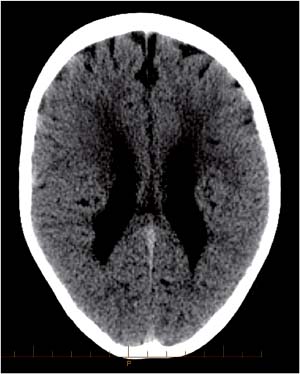Case 70 Cerebral Palsy and Selective Dorsal Rhizotomies Jean-Pierre Farmer and Abdulrahman J. Sabbagh Fig. 70.1 Computed tomography scan of the head showing presence of periventricular leukomalacia without hydrocephalus.
 Clinical Presentation
Clinical Presentation

 Questions
Questions
 Answers
Answers
70 Cerebral Palsy and Selective Dorsal Rhizotomies
Case 70 Cerebral Palsy and Selective Dorsal Rhizotomies Fig. 70.1 Computed tomography scan of the head showing presence of periventricular leukomalacia without hydrocephalus.
 Clinical Presentation
Clinical Presentation

 Questions
Questions
 Answers
Answers
< div class='tao-gold-member'>
Only gold members can continue reading. Log In or Register to continue
Stay updated, free articles. Join our Telegram channel

Full access? Get Clinical Tree


